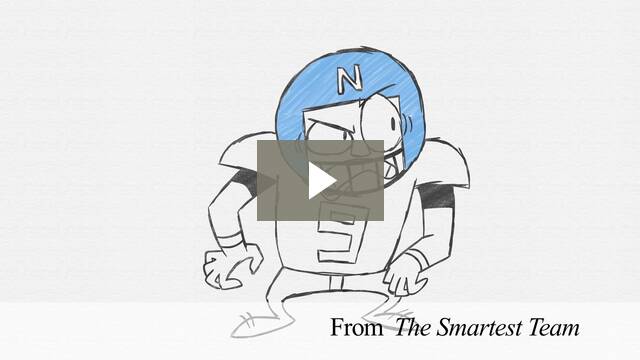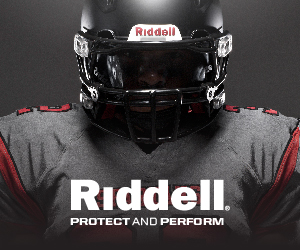According to the most recent international consensus of concussion experts, [1] concussion signs (those noticed by coaches, parents and teammates) and symptoms (feelings or problems experienced by the athlete) fall into five "clusters":
1. Symptoms
- somatic (headache, nausea, vomiting, dizziness, visual problems, sensitivity to light/noise, balance problems);
- cognitive (feeling mentally "foggy," feeling slowed down, difficulty concentrating and remembering);
- emotional (involuntary crying or uncontrollable episodes of crying and/or laughing)
2. Physical signs (loss of consciousness, amnesia)
3. Behavioral changes (irritability, sadness, nervousness, more emotional, depression)
4. Cognitive impairments (slowed reaction times etc.)
5. Sleep disturbance (insomnia, drowsiness, sleeping less than usual, sleeping more than usual) [1].
Despite widespread concerns about, and repeated studies showing chronic under-reporting by athletes of concussion symptoms, in the absence other ways to accurately diagnose concussions, especially in the absence of objective markers of concussion, clinicians have no choice but to rely on subjective self-reported symptoms in concussion assessment.

Potential signs of concussion requiring removal from play
A concussion should be suspected on the sports sideline, and the athlete immediately removed from play and not permitted to return the same day, if any of the following signs are observed after a direct or indirect blow to the head:
- loss of consciousness (LOC)
- player lying motionless on the ground or is slow to get up
- player exhibits balance or motor coordination problems (athlete stumbles, has slow/labored movements or unsteady gait)
- player is disoriented or confused (inability to respond appropriately to questions; not aware of plays or events)
- player exhbits a loss of memory (post-traumatic amnesia [1,2]
- player has dazed, blank or vacant look on face;
- player has visible facial injury in combination with any of the other signs.
Three symptoms scales
While there are a number of symptom scales currently in use, including the Post-Concussion Symptom Inventory (a version of which can be used for children as young as 5 and which includes a parent version[19] the three main symptom scales in most widespread use are
- The Post-Concussion Symptom Scale (PCSS); [13]
- The Sport Concussion Assessment Tool 3 (SCAT) - Versions 2 and 3; [3] and
- The Concussion Symptom Inventory (CSI), a 12-item scale derived from the PCSS and SCAT2. All have been found to be sensitive to the acute effects of concussion in high school, college, and professional athletes. [2]
Post-Concussion Symptom Scale
| Symptom Evaluation: How do you feel? | Time of Injury | 2-3 hours post-injury | 24 hours post-injury | 48 hours post-injury | 72 hours post-injury |
|---|---|---|---|---|---|
| 1. Headache (reported as symptom by 94.2% of high school athletes [4] | |||||
| 2. Nausea (reported by 31.4% of high school athletes)[4] |
|||||
| 3. Vomiting | |||||
| 4. Balance problems | |||||
| 5. Dizziness (reported as a symptom by 75.6% of concussed high school athletes)[4] | |||||
| 6. Fatigue | |||||
| 7. Trouble falling asleep | |||||
| 8. Sleeping more than usual | |||||
| 9. Sleeping less than usual | |||||
| 10. Drowsiness | |||||
| 11. Light sensitivity (reported as a symptom by 36.0% of concussed high school athletes) [4] | |||||
| 12. Noise sensitivity | |||||
| 13. Irritability | |||||
| 14. Sadness | |||||
| 15. Nervousness | |||||
| 16. Feeling more emotional | |||||
| 17. Numbness or tingling | |||||
| 18. Feeling slowed down (e.g. slower reaction time) |
|||||
| 19. Feeling mentally "foggy" | |||||
| 20. Difficulty concentrating (54.8% of concussed high school athletes report this symptom) [4] |
|||||
| 21. Difficulty remembering | |||||
| 22. Visual problems |
Grading symptom severity
In using the PCSS, the athlete is asked to rate or score the severity of the symptom on a 7-point (Lykert) scale:
0 = not experiencing symptom
1 = very minor
2 = annoyingly present
3 = moderate level
4 = more significant
5 = intense and disruptive, and
6 = worst and unbearable. [5]
The PCSS has gained widespread recognition in concussion evaluation. A modified PCSS is used for self-assessment by the athlete on the Sport Concussion Assessment Tool 3 (SCAT3) [3] and in some computerized neurocognitive tests used by health care professionals in managing concussions, and is an important tool used by clinicians in assessing an athlete's readiness for return-to-play.
Athletes with pre-injury depression, sleep disturbances, and/or attention-deficit/hyperactivity disorder should not be expected to have a total score of 0 on the PCS scale before they are medically cleared for a return to play because of their elevated baselines.
In addition, because the PCSS contains 22 symptoms that are not specific to concussion and overlap with other disorders (e.g. sleep disturbances, depression, attention deficit disorder), some non-injured athletes may report symptoms. [16] In fact, between 50 and 84% of high school athletes report similar symptoms of concussion at baseline. [16] One 2005 study [6] found, for instance, that the mean symptom score for non-injured high school males was 5.8, despite the fact that such athletes had never suffered a concussion. As a result, the generally accepted threshold for return to play is 7. [6,7]
As a result, some have criticized use of symptom scales as attributing to concussion nonspecific symptoms and diagnosing individuals with whiplash, affective disorders (e.g. depression), or inner ear problems (vertigo, dizziness) as having a brain injury, and have called for concussion management guidelines to consider non-brain based conditions that might better account for the patient's symptoms.[20]
In patients with pre-existing mental health disorders, concussion may make symptoms such as depression, anxiety or attention-deficit disorder worse and make them more difficult to control.
Whatever the symptom scale, it should be used not only for the initial evaluation but for each subsequent follow-up assessment until all signs and symptoms have cleared both at rest and with physical exertion. Symptom checklist scores and the ability of the scales to detect concussion, however, typically diminish with the passage of time due to the natural course of recovery from mild traumatic brain injury (mTBI). [2]
Difficult to spot or diagnose
The process of determining whether an athlete has suffered a concussion or mTBI (note that the use of the terms interchangeably with concussion has generated controversy, because while all concussions are mTBIs, not all mTBIs are concussions; concussions are a subset of mTBIs, on th less-severe end of the brain injury spectrum) [16] is complicated by a number of factors:
- Because athletes who suffer concussions are not functioning at their cognitive baseline, they may not recognize they have suffered injury;
- There may be no specific impact event to alert the athlete or sideline personnel to concussion (a third of diagnosed concussions in a 2012 study of college athletes [8] were not associated with a specific impact event);
- Many athletes do not experience symptoms right away after an impact event: of 31 diagnosed concussions in a 2012 study associated with an identified specific impact, [8] 19 experienced immediate or near-immediate onset of symptoms, but 3 had delayed onset on the same day, 2 first experienced symptoms the next day, and in 7 the timing of onset of concussion symptoms was unknown. Of the 13 players with diagnosed concussion without a specific identified single impact, 6 had delayed symptom onset after play (after play or in subsequent days), and in 2 the timing of symptom onset was unknown. Commenting on the results of that study, one prominent concussion expert was left to "wonder[ ] how many concussions were missed ... given that 23% of the diagnoses reported were delayed (average of 17 hours) and another 27% had unspecified onset." [9]
Gender differences in symptomology?
Some studies suggest that symptoms also can vary by gender.
A 2011 study in the Journal of Athletic Training, for instance, found that female high school athletes were more likely than males to report drowsiness and sensitivity to noise which, "[w]ithout adequate symptom assessment ... may be more easily missed or attributed to other conditions, such as stress, depression or anxiety." [10] As a result, the study says such symptoms reported by females should be considered signs of concussion until they can be more definitively attributed to pre-existing neuropsychological conditions and concussion ruled out.
But a recent position statement [16] states that "[t]here have been no consistently demonstrated differences in the symptoms reported between male and female athletes." (citing studies, including n.10 below).
Loss of consciousness
While one recent study found that LOC occurs in fewer than 5% of concussions at the high school level (less than half the 10-11% rate found in earlier studies), [11] LOC, especially for a minute or more, is still considered an important potential sign of a more serious concussion, [1,16] and a head injury that may require further imaging and intervention. [16,18]
No same day return to play
The most recent international conference of concussion experts [1] unanimously agreed that no RTP [return to play] on the day of suspected concussive injury should occur for high school and college athletes, especially as studies show that college and high school athletes allowed to return to play on the same day may demonstrate neuropsychological deficits that may not be evident during an initial sideline evaluation and are more likely than adult athletes to have delayed onset of symptoms. [1](citing studies @ notes 59-65)
As a result, the Zurich Consensus Statement emphasizes the importance of treating athletes under 18-years-old more conservatively (such as by extending the amount of time of asymptomatic rest and/or the length of time for completing the symptom-limited, exercise program it recommends before return to play), even if the resources (e.g. the presence of team physicians or athletic trainers experienced in concussion management, access to neuropsychologists, consultants, neuroimaging etc.) are the same as for an older, professional athlete.
The Zurich Consensus Statement recommendations are embodied in the laws of a growing number of states (48 and the District of Columbia as of January 11, 2015) which require immediate removal of an athlete from a game or practice if a concussion is suspected, ban same day return to play, and require written clearance from a concussion specialist before an athlete is allowed to begin practicing or playing again.
For more about the 6-step, exercise-limited, program experts recommend that an athlete complete before a full return to play (and that at least one state (California) now mandates be completed before return to play, click here.









